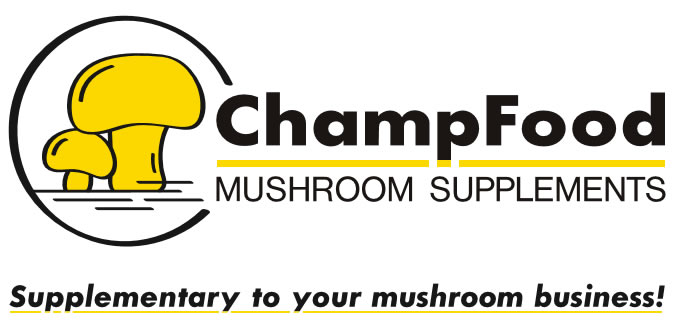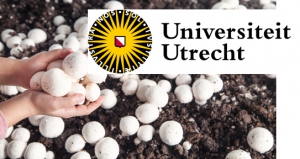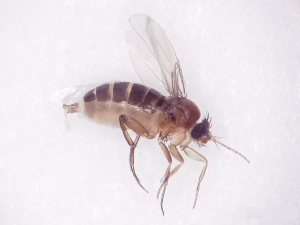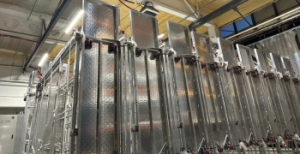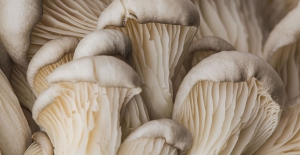
Mushroom Matter
Welcome on our platform. Why MUSHROOM MATTER? Because mushrooms play an important role in our lives as well in business. Our goal is to bring the world the very latest mushroom news with the upmost care to support the positioning of our beloved Mushroom.
Water can be purified using mushroom substrate: the mixture of fungal filaments and horse manure that remains after harvesting mushrooms. The substrate effectively decreases concentrations of pesticides and drugs in contaminated water.
Utrecht University researchers Brigit van Brenk, Han Wösten, and colleagues demonstrate this in a paper in the scientific journal Applied Microbiology and Biotechnology. The results show the potential of the substrate as a promising alternative to current water purification methods.
White button mushrooms (Agaricus bisporus) are grown on composted, sterilized horse manure. Grains containing the fungus are mixed into the compost, from which fungal filaments grow that fill the compost. Fruiting bodies of the fungus, mushrooms, eventually develop from this network of filaments.
But what to do with the substrate after the mushrooms are harvested? In the Netherlands, not much is done with the leftover waste: instead, large quantities are sent to Germany to be used as fertilizer. But couldn’t the substrate be put to better use
Enzymes
Van Brenk and her colleagues suspected that there might be a better way to use the substrate. Fungi that live off dead plant material, such as white button mushrooms, make enzymes to break down lignin. However, these enzymes are not highly specific, and it has been shown that they also break down substances other than lignin.
The researchers therefore decided to investigate the potential of using the leftover waste from mushroom cultivation to purify contaminated water. After all, concentrations of drug residues, pesticides and other harmful substances in surface water and groundwater are increasing, posing a threat to aquatic life forms. Moreover, existing methods of purifying water of such substances are expensive.
Please read the full article here.
Source: Utrecht University
Maintaining a high relative humidity and warm temperature is essential for cultivating many crops, especially in controlled growing environments. Such a warm and moist climate is ideal for rapid plant growth but can also lead to challenges such as dirty walls and rust in the underlying structures. To address these issues, specialized vaportight coating systems are essential.
Request and Assessment
When approached for renovation projects, the first step is to visit the site to assess the necessary work activities. Often, there may already be a vaportight coating system in place that needs renewal. During the site visit, it is crucial to decide whether the existing coatings need to be replaced or reinforced. Typically, this involves applying a new layer of an indoor coating to the walls and sealing corner joints and window frames with a vaportight coating system.
Phasing the Renovation Renovating agricultural growing rooms must be done without disrupting ongoing activities. This often requires a phased approach, treating a few rooms at a time, usually about two per week. Ensuring the substrate is dry before applying the coating is vital to prevent moisture from getting trapped under the coating layer. If there is already a layer of coating, new applications can often be made immediately without a primer, except in the corners where a primer may be necessary on bare concrete.
Renovating agricultural growing rooms must be done without disrupting ongoing activities. This often requires a phased approach, treating a few rooms at a time, usually about two per week. Ensuring the substrate is dry before applying the coating is vital to prevent moisture from getting trapped under the coating layer. If there is already a layer of coating, new applications can often be made immediately without a primer, except in the corners where a primer may be necessary on bare concrete.
Application Process
In corners, a primer is applied to the exposed concrete, followed by a layer of indoor coating reinforced with a fleece material to enhance durability.
A second layer of the indoor coating then seals the system, ensuring the desired vapour density and preventing moisture ingress.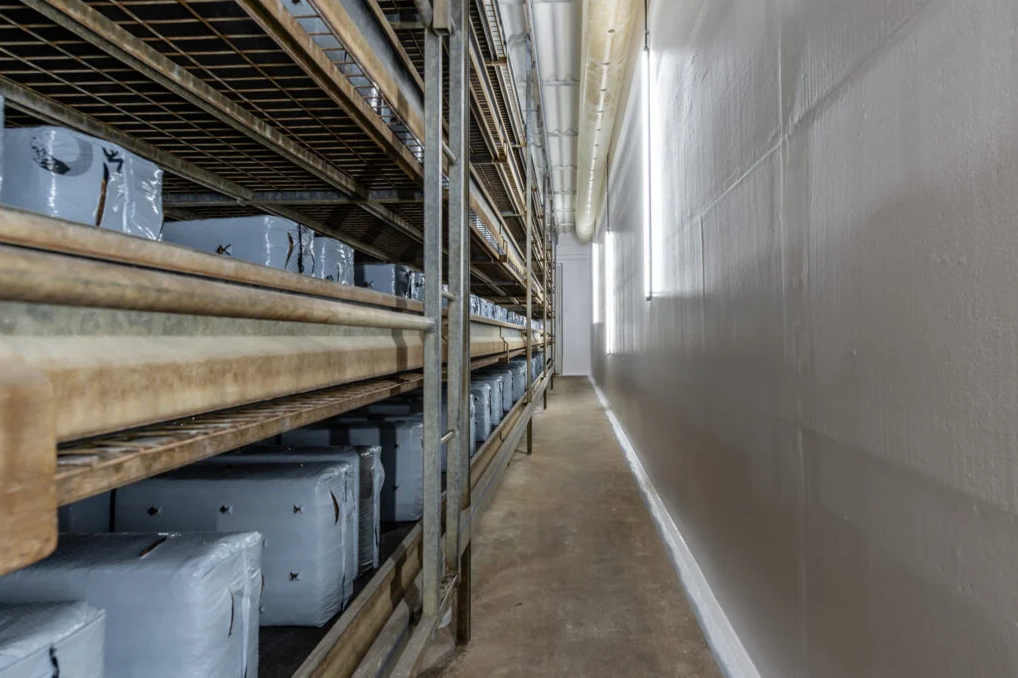 Results
Results
Over the course of several weeks, multiple rooms can be treated to achieve a fully renovated environment. During such projects, issues like leakage in cavities can occur, causing floor joints to come loose. These must be treated promptly to ensure the integrity of the renovation. Once all rooms are treated, the result is a set of growing environments that maintain optimal conditions for plant growth while protecting structural elements from moisture and corrosion.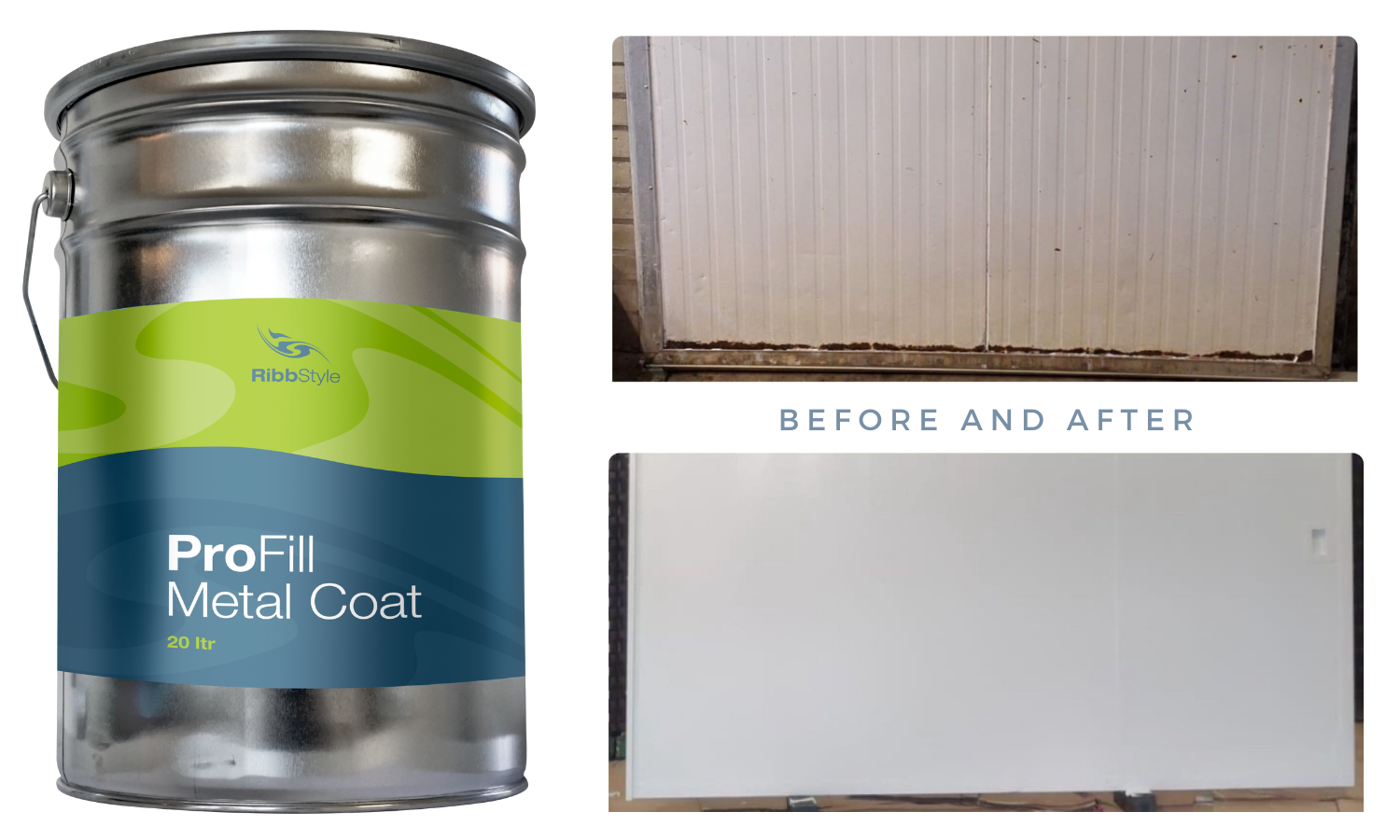 Additional Solutions
Additional Solutions
Many modern growing rooms are constructed with panels set in U-profiles, which are prone to rusting. Besides standard coatings, there are specialized products like ProFill Metal Coat designed to prevent or address corrosion. Detailed product information is available for
those needing advanced solutions to protect metal structures.
By using advanced coating systems and a carefully phased approach, agricultural growers can ensure their growing rooms remain in top condition, promoting healthy crop growth and extending the lifespan of their facilities.
For more information, please visit the website of RibbStyle.
Author: Mushroom Matter
Phorid larvae are a dangerous pest in phase III mushroom cultivation, and they are hard to control. No management can lead to a total loss of the 3rd flush. In addition, quality losses, distressed pickers, and fed-up neighboring communities are causing extra work you like to avoid. The flies get drifted into the houses of neighbors and like to accumulate under ceilings in e.g. warm bathrooms. Not a real pleasure when lying in the bathtub.
The larvae are obligated mycelial feeders therefore, the adult flies are not attracted to oviposit in the compost until after spawning. The up to 6 mm long larvae feed on the growing mushroom mycelium but rarely on the fruiting body itself. They can be distinguished from sciarid larvae by the absence of the black head, and they develop more rapidly into pupa.
Phorid fly larvae in the compost Adult female phorid fly (courtesy of Penn State University)
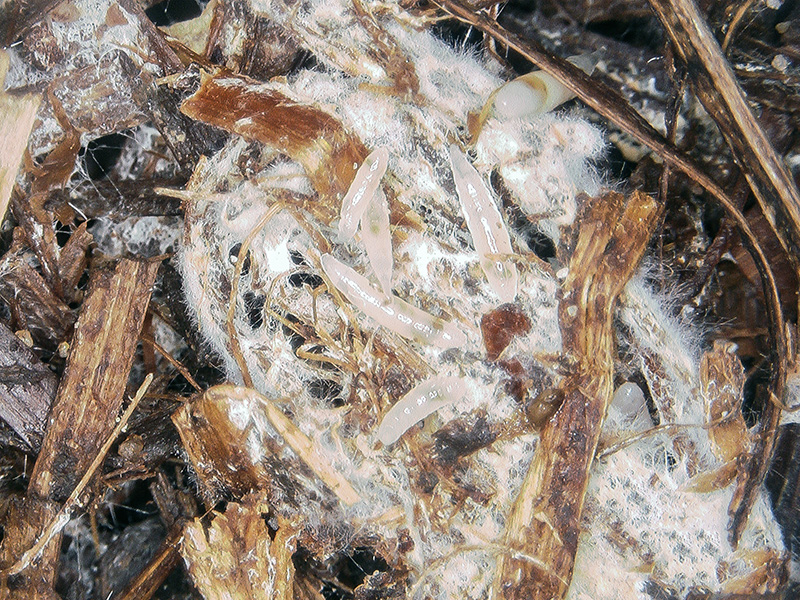
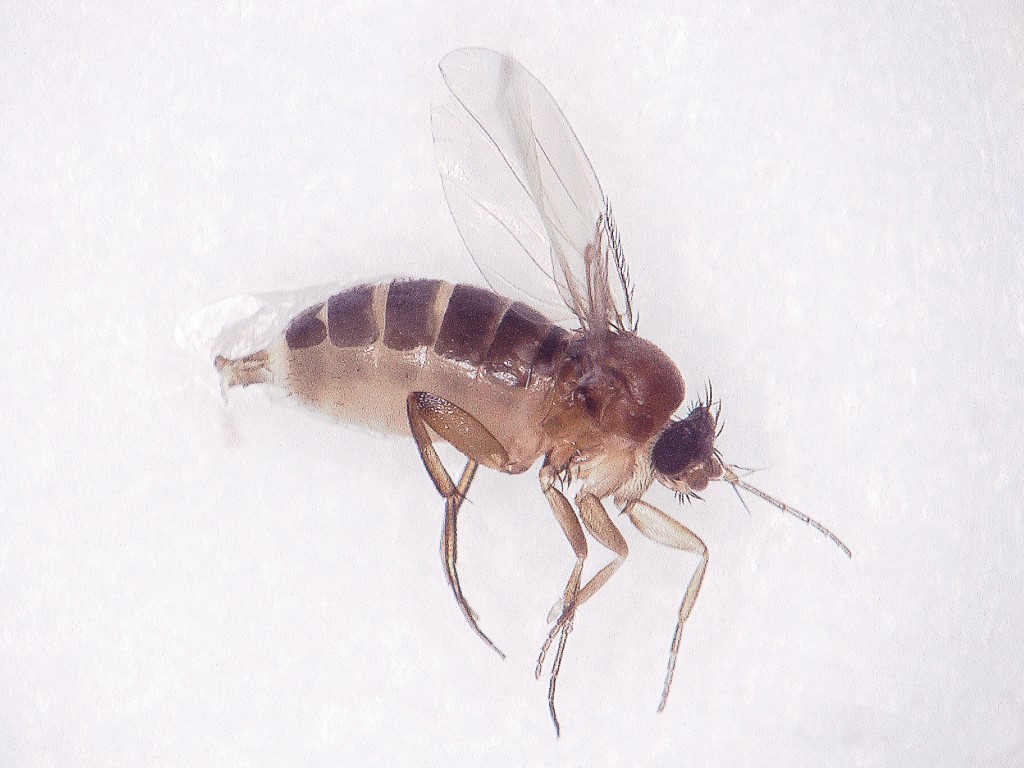
The adult fly can be distinguished from the sciarid fly by the short antennae and by its rapid, jerky, running movement. Adult phorids act as a vector for dry bubble. 75 flies per m2 may already cause an outbreak of the disease. Phorid flies are unable to fly when the temperature falls below 12°C (54°F). In the past they have rarely infected mushroom houses after late fall. As there are now more and more warm days into November, this period is prolonged. The start of the nematode application should be in the early summer. If the fly population is fully built up it is too late.
Further improving the already effective application of nemycel® phorid fly
For around two years nemycel® phorid fly is used in phase III mushroom cultivation in the U.S. and Europe with effective control. After accessing the data and further research, we recommend the following change in the application:
Old application recommendation:
|
Day 2 |
Day 18 |
|
1.6mio/ m2 |
1.6 mio/m2 |
The Phorid fly has a short larvae stage which is hard to target. The larvae are only susceptible 4-5 days (at 25°C / 77°F) for nematode infestation. The nematodes last for 5 days in the compost. Therefore, a change to multiple applications with one bigger hit at casing and then less dosages later control significantly more larvae. The larvae stop feeding fast after infestation and die after 2-3 days. The nematodes multiply inside the larvae cadaver and get out to prey on more larvae after 7-10 days.
Nematodes reproduce inside the larvae Dissolved larvae cadaver and nematodes
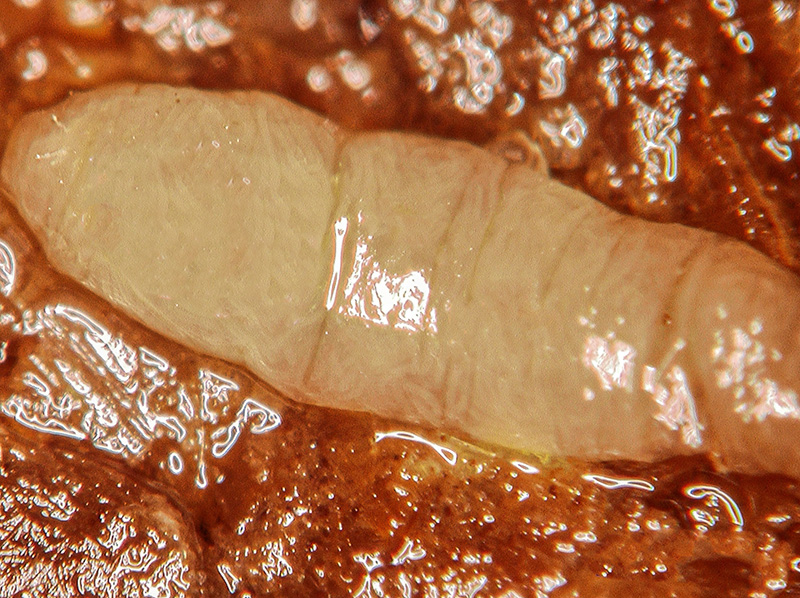
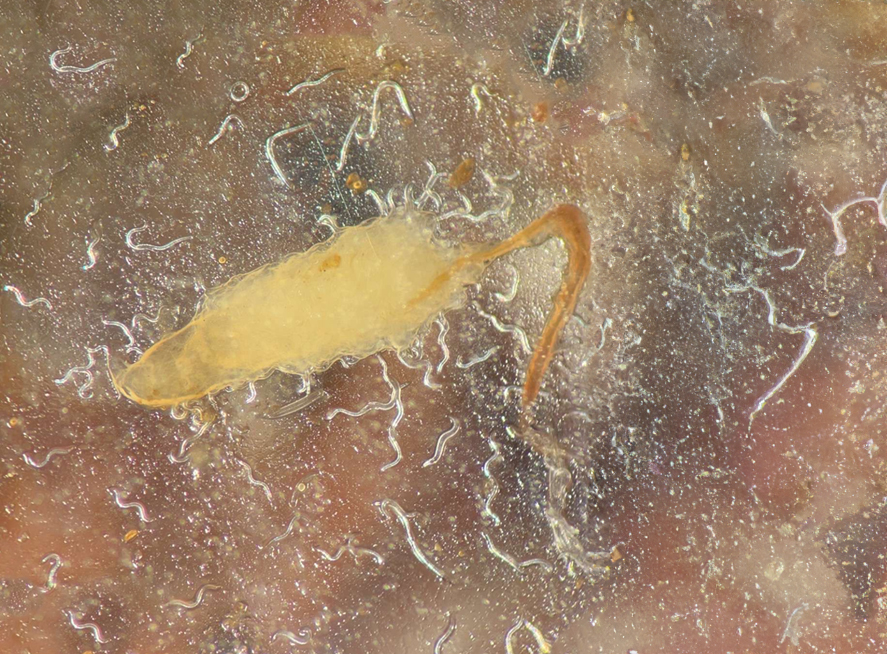
New application recommendation:
|
At casing - apply on compost |
Day 3-4 after casing |
Day 9-10 after casing |
Day 15-18 after casing, before 1st flush |
After first flush |
|
1.6mio/ m2 |
0.8 mio/m2 |
0.8 mio/m2 |
0.8 mio/m2 |
0.8 mio/m2 |
Control with nematodes, in combination with the farms IPM can lead to 25% more harvest, more A grade mushrooms, better working conditions for the pickers and a good relationship to your neighboring communities. Multiple applications improve efficiency significantly.
nemycel® phorid fly is a fully organic insecticide without micro plastics and made in Germany. No resistances are known of. The product is harmless for humans, pets, water, and the environment. No protective clothing is needed, and your workers don’t need to undergo security training.
This research was done by the Mushroom Fly Research Team at Penn State, by Dr. Michael Wolfin and Malachi Brought. This research on mushroom farms is still ongoing to find the most effective application rates and schedules.
More information about nematode application in mushroom cultivation can be found on:
https://www.e-nema.de/en/nematodes/professionals/application-areas/mushrooms/
All pictures and videos courtesy of M. Wolfin & M. Brought | Penn State University
--------------------------------------------------------------------------------------
Fruitful cooperation Growtime with Lou Légumes
A trip to France — fruitful cooperation with Lou Légumes
GROWTIME is a company that, since its inception, has had aspirations to operate around the globe. We started with Poland and later our customer base expanded to include international collaborations. Currently, we supply mushroom farms in 17 countries and have an appetite for more, as exemplified, among others, by our recent cooperation with French mushroom farm Lou Légumes.
Lou Légumes — France is more than just the Eiffel Tower!
Mushroom production at Lou Légumes is an example of healthy, genuine, sincere and hard work of people with one goal:
To make others eat more vegetables for their health.
LOU mushrooms are grown on 3 sites: at the gates of Brittany in Poilley, in the heart of the Mayennais bocage in Landivy, and at the foot of the Auvergne volcanoes in Chaspuzac.
Such a large production requires many masterminds and a lot of attention, which translates into great quality mushrooms.
That's why we are all the more pleased that GROWTIME was able to enter into a partnership with LOU.
GROWTIME with a trip to France
LOU is a serious company, and we were well aware that cooperation would require clear communication, reliability, and quality.
However, at GROWTIME, we have these qualities written firmly into our code of honor. In addition, we know the value that our lorries offer and were happy to strike a deal for their delivery.
Why did LOU choose GROWTIME?
There are several reasons:
- our NEWTON lorries maximize work efficiency, and in today's fast-paced world, “time” is a priceless commodity,
- we delivered an entire container of lorries on the agreed date to the address of the mushroom farm,
- GROWTIME's good reputation around the world is no accident.
We are pleased that our portfolio has been enriched by a company with traditions. For us, this is further proof that the hard work to improve our lorries is not in vain.
In conclusion, we would like to thank Lou Légumes, which has put its trust in us. We are eagerly awaiting further projects to, thanks to our trolleys, increase the profitability of mushroom farms that cooperate with us, and to grow together with them.

Dirty bunker pipes
Not hard to imagine that reduced air flow going into the compost is not good for the quality of the compost. To maintain high-quality compost, it's crucial to keep the pipes under the bunker floor clean and free from blockages. Blocked pipes can lead to water accumulation on the bunker floor as the water will not drain, and create anaerobic conditions, harming the composting process. Set up a routine to clean all the pipes thoroughly every three months. Use a hose to flush out any dirt and debris, ensuring proper airflow throughout the composting process.
Ensuring thorough cleaning of the blocked pipes is crucial, as simply flushing them with water from front to back may not be sufficient. Despite water passing through, dirt can still accumulate inside the pipes. Achieving a satisfactory result involves reaching the end of the pipes with a hose and utilizing back pressure to dislodge any remaining debris. Attached below is a picture showing completely blocked pipes and the dirt extracted from some of them. This visual evidence underscores the necessity of meticulous cleaning to maintain optimal functioning of the composting process.

When pipes get blocked in composting systems, some issues can pop up. You might see wet spots and areas without enough air (anaerobic zones) in the compost. This happens because the airflow needed for composting gets messed
up. When pipes are blocked, air can't move properly, making some parts of the compost lack oxygen. It will also be visible in the pressure on the bunker floor being reduced. All this isn't good for composting and can cause bad smells and slow decomposition.
It's important to be safe when dealing with blocked pipes in composting systems. Wear a good face mask to protect yourself from harmful gases that can build up in blocked pipes over time. Also, make sure to keep the area well-ventilated and follow safety rules to avoid accidents.
Erik de Groot
This email address is being protected from spambots. You need JavaScript enabled to view it.
https://www.mushroomsconsultant.com
Press release: CNC, Veme and Verbruggen

CNC Holding BV, Veme Specials BV, Verbruggen Substraat BV and Verbruggen Paddestoelen BV join forces to boost international growth ambitions in the substrate market for exotic mushrooms.
On 25 March 2024 CNC Holding BV announced it acquired a majority interest in Veme Specials BV, Verbruggen Substraat BV and Verbruggen Paddestoelen BV. The companies are aiming for a strong partnership in order to further expand the growth ambitions in the field of raw materials for the cultivation of exotic mushrooms.
The acquisition of Veme Specials BV, Verbruggen Substraat BV and Verbruggen Paddestoelen BV marks an important milestone in the growth strategy of CNC and reflects its ambitions for excellence in substrate production and the further development of the exotic substrate and mushroom division. Combining the expertise of CNC, Veme Specials BV, Verbruggen Substraat BV and Verbruggen Paddestoelen BV will result in a strong synergy and will bring a broader range of high-quality products to our clients.
“This acquisition is perfectly in line with our strategy to expand our product range and strengthen our market position. We are pleased to welcome the talented and committed teams of Veme Specials BV, Verbruggen Substraat BV and Verbruggen Paddestoelen BV and look forward working together on innovative, high-quality substrate, mushroom and mycelium solutions for our clients,” says Eric van Asselt, CEO of the CNC Group.
Clients can continue to rely on the reliable, high-quality products of Veme and Verbruggen. Moreover, CNC underlines that clients from all three companies will benefit from the added value resulting from the combined knowledge and expertise of the three companies. The current activities of Veme Specials and Verbruggen will continue as usual and be developed further in the future. The familiar faces of John Verbruggen and Marco Mezenberg will also remain as they continue to manage their respective companies.
About CNC (Circular Natural Compost):
CNC Holding BV is an internationally operating group of companies active in the mushroom sector. The companies produce and/or transport high-quality, sustainable substrate for mushroom cultivation. Due to the increasing focus on healthy food, sustainability and the impact of mushrooms in the circular economy, CNC expects significant growth in the coming years. CNC already has a strong position in the European market and aims to increase both its market and its position in the coming years.
The CNC group comprises the following companies:
CNC Grondstoffen BV is one of Europe’s largest suppliers of sustainable compost for the cultivation of mushrooms. These substrates are prepared in the most advanced indoor composting plants in Milsbeek and Moerdijk and deliver internationally to over 45 countries. The group also has a production facility in Poland (Holpol).
CNC Exotic Mushrooms BV produces wood substrates for the cultivation of exotic mushrooms for the European market. In 2022 it took a new production facility in Heerewaarden with the latest machinery and technologies into use, significantly enhancing its production capacity and facilitating a fast growth for the company.
Transport company AMCO realises the collection of horse manure (as a raw material for compost production) from approximately 1200 stables and the delivery of the phase 3 compost to growers.
About Verbruggen Paddestoelen BV en Verbruggen Substraat BV:
Verbruggen Paddestoelen BV operates various production locations, and considers sustainability and circularity as spearheads in its operational management. The company is an absolute frontrunner in the sector in the field of organic cultivation, and has been growing organic oysters mushrooms and other varieties such as shiitake for over 30 years. The company is SKAL certified and uses a track-and-trace system and analysis protocol to ensure that the raw materials it uses have organic origins.
The unique aspect of its cultivation process is circularity – which may have become a trend in recent years, but has been a staple for Verbruggen for more than 30 years. Verbruggen Substraat BV is specialised in the production of phase 1 substrate. John Verbruggen is a pioneer in the field of cultivation and innovation and is considered an ambassador in the sector. John has contacts worldwide and is always promoting new projects in the company that will further optimise and increase the sustainability of production.
About Veme Specials BV:
Specialised company Veme Specials BV in Gemert was built on the passion for oyster mushrooms and other varieties. Its founders, John Verbruggen and Marco Mezenberg, both have decades of experience in the cultivation of organic oyster mushrooms and the production of substrate for their own companies.
This experience led to the establishment of Veme Specials BV in 2012, with the purpose of producing phase 2 substrate for their own companies and third parties. Veme Specials BV is focused on maximising the yield of its clients by supplying high-quality substrates. The group of companies in which Veme Specials BV operates includes all aspects of mushroom cultivation. As a result, there is a clear insight into all aspects of mushroom cultivation, from phase 1 to phase 5, and that quality and innovation processes are an integrated part of the company.
The Mushroom Moment
“Zombie-ant fungi do not reanimate ant corpses.”
It’s the answer to a question that Professor David Hibbett likely thought he’d never be asked. But during the Q&A session hosted and filmed by WIRED magazine inside a Manhattan studio, the mycologist took it in stride, reassuring the world that the parasitic fungus that infects and kills other organisms does not, in fact, create an army of living-dead insects.
Sitting in front of a white backdrop and behind a tabletop bearing varieties of mushrooms, Hibbett fielded a series of fungi-related queries pulled from Twitter (now known as X). He identified the world’s largest known fungus (the 35-foot-long Phellinus ellipsoidius that is found in China), described his personal choice for the all-time creepiest mushroom (the appropriately named Bleeding Tooth Mushroom [Hydnellum peckii], which secretes blood-red droplets), and cleared up any confusion about whether there is such a thing as a carnivorous mushroom (indeed there is).
He also championed fungi as potential allies in the fight against environmental pollutants; revealed the hidden ways in which mushrooms communicate with each other; and extolled the joys of foraging.
The subject matter may have seemed humble, but the response to the video was not. Since it was posted on May 2, 2023, the WIRED piece has earned more than a million views and over 2,600 comments, many of them urging Hibbett to start his own mushroom-themed YouTube channel. “Everybody should be obsessed with mushrooms,” Hibbett gently noted at the conclusion of the video.
Please read the full article here.
Source: Clark University


